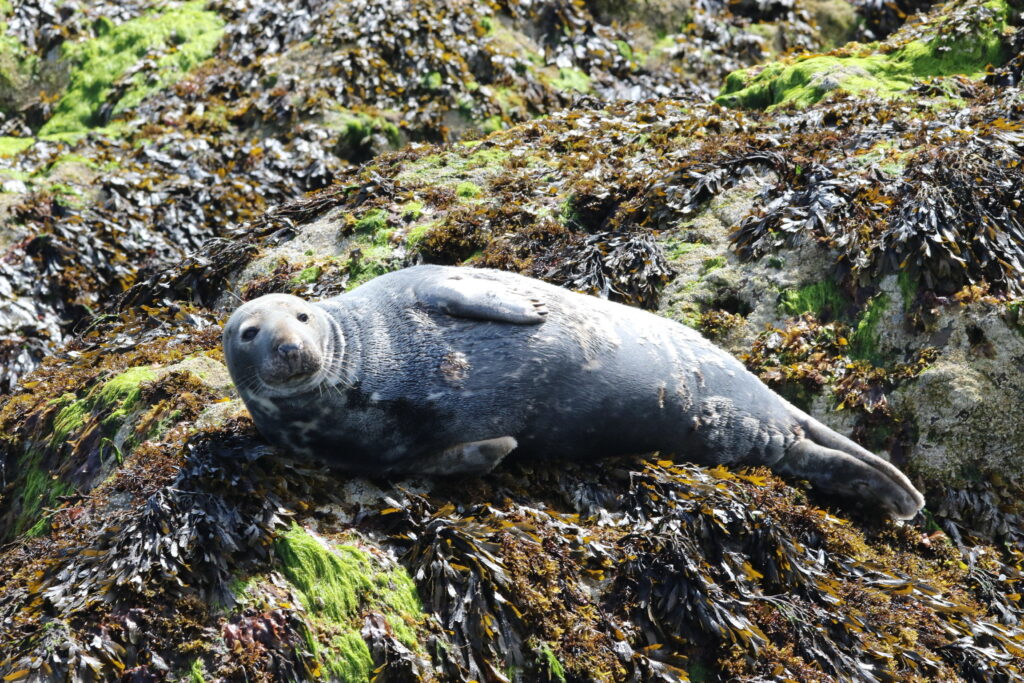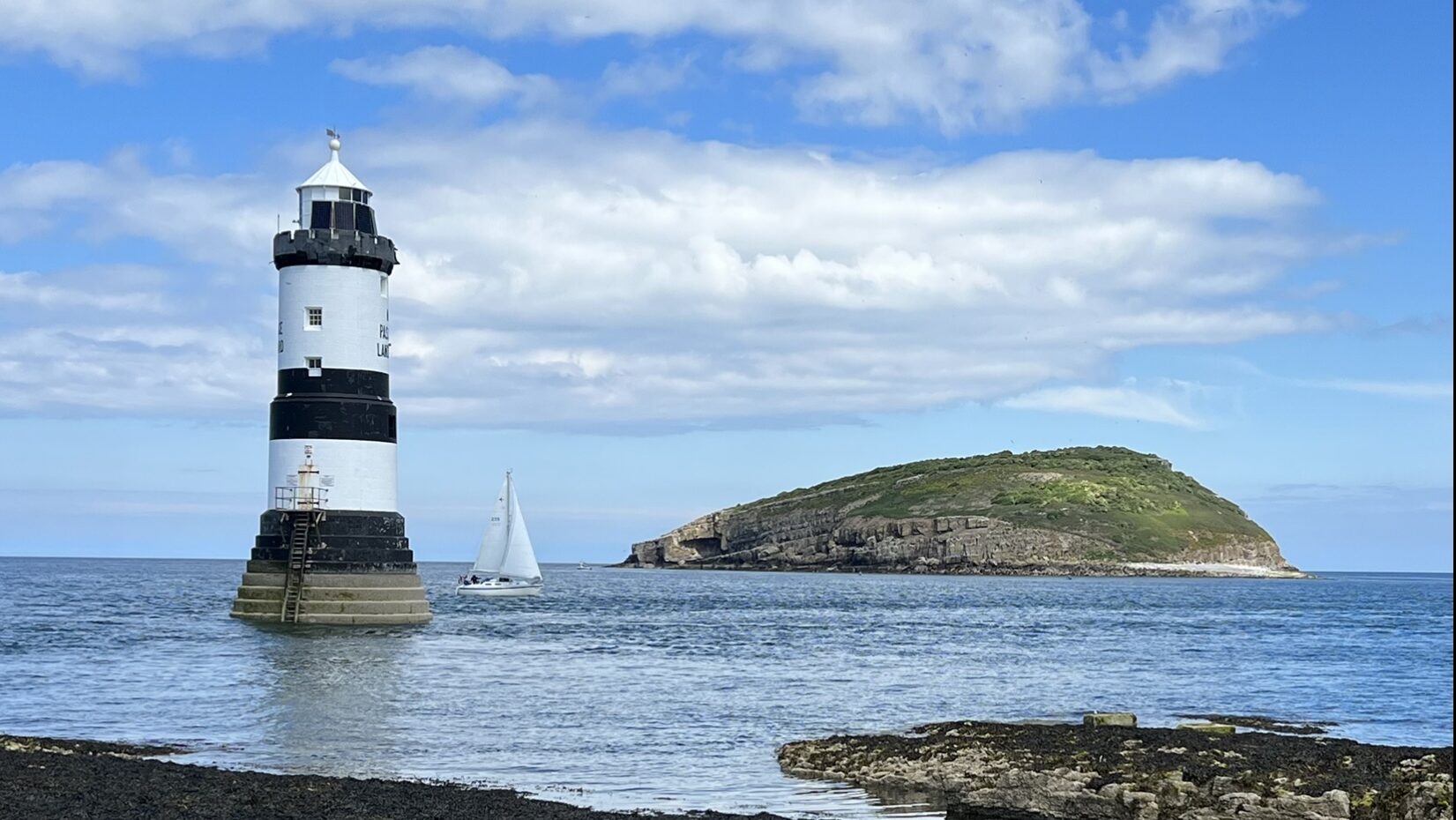Seeing Puffins in their natural habit has been one of my bucket list items for as long as i can remember. After seeing Red Squirrels for the first time earlier this year, I was on a roll and decided that now would be a good time to go Puffin watching. I researched where I would have the most success viewing Puffins, along with an area of the U.K. I had yet to visit, then packed my case, loaded the car and headed for the Isle of Anglesey in North Wales. You can catchup on my Anglesey post here.
Like many people, I have have always adored these charismatic birds and had longed to see them in the wild. Puffins which are also known as the Clown Bird, live at sea for most of the year, therefore timing is critical to have the best chance of viewing them when they return to land for breeding.
Contents
Best time to observe Puffins?
Through my research, I discovered that puffins are best observed between April and August. However, the peak opportunity to view adult puffins is during June and July. This period is particularly significant because it coincides with their busiest phase—hunting to feed their chicks. During these months, puffins are highly active, frequently flying back and forth from the sea to their nests with food. This increased activity not only provides a fascinating insight into their behavior but also makes for more dynamic and engaging wildlife viewing. For anyone interested in observing puffins at their most vibrant, witnessing their tireless efforts during the breeding season is truly ideal.
Fascinating Puffin Facts
Puffins are captivating seabirds and these are some fascinating facts I learnt during my research :
- Puffins spend most of their lives at sea only and only return to land for breeding
- Puffins usually mate with the same partner for life
- The Puffin bill changes colour throughout the year, taking on its colourful beak for mating
- Puffins dig out a burrow in a grassy bank or rocky crevice and building their nest with feathers and grass.
- Puffins return to the same site year on year for breeding
- A Puffin parent lays a single egg
- Both parents take it in turn to incubate the egg for 36-45 days before the baby “puffling” hatches
- Puffin parents share feeding duties
- The Puffin lifespan is 20 years
- Puffins measure around 25mm in length
- Puffins eat small fish
My First Puffin Sighting
My first attempt to see puffins led me to RSPB South Stack, a renowned birdwatching site located on the northwest side of the island. Known for its dramatic cliffs and stunning coastal views, South Stack is a popular destination for observing seabirds in their natural habitat. I was drawn to this location by its reputation as a prime spot for viewing puffins and other remarkable wildlife, and I was eager to explore the rugged landscape in hopes of catching a glimpse of these iconic birds.

I spoke with a representative from the RSPB, who informed me that there were currently only five nesting pairs of puffins at South Stack. He provided me with information about the best locations for spotting them. I felt somewhat disheartened by the low number, as I had anticipated seeing hundreds. With just ten puffins present, I wasn’t sure how fortunate I would be in my search. I learned that puffins spend a considerable amount of time hunting at sea for food and sharing nesting duties, which led me to believe my chances of spotting one might be slim. However, I had traveled all this way to see puffins, so I was determined to begin my search!
Equipped with my binoculars, I started scanning the cliff face that the representative had indicated would offer my best chance of seeing them. Miraculously, after just ten minutes, I spotted three pairs of orange feet! I had found them! Excitedly, I reached for my camera, but by the time I got it ready, only one puffin was still in view. Despite the quick turn of events, this was my first-ever wild puffin sighting, and I was thrilled to finally catch a glimpse of these delightful birds, affectionately known as “sea parrots.”

The Second Sighting
I learned from the locals that boat trips were offered from Beaumaris to a destination known as Puffin Island. It’s fitting that this uninhabited island was named for the large number of puffins it once attracted. At its peak towards the end of the last century, as many as 2,000 breeding pairs were recorded. Unfortunately, a rat infestation led to a dramatic decline, leaving just three pairs by 1998. Fortunately, the rats were eradicated, and I’m pleased to report that the puffin population has since rebounded to around 300 breeding pairs. This resurgence filled me with optimism that I would have more opportunities to see the “clowns of the sea.”
Boat Trip
Several boat trips are available in Beaumaris, and I chose to go with Seacoast Safaris. They offer a smaller boat that accommodates just 12 passengers, which provides a more intimate experience. This setup allows for engaging commentary from the guide and gives passengers the freedom to move around the boat for better viewing and photography opportunities.
Puffin Island

As we approached Puffin Island by boat, I was in awe of the sheer number of birds visible on the rocky cliffs and the constant activity of birds flying to and from the island. Guillemots were plentiful, and their wings seemed to beat with incredible speed and purpose as they flew. Amidst the flurry of birds departing from the cliffs, the guide pointed out the puffins! At first, I couldn’t spot them, but with my trusty binoculars, I finally noticed their distinctive orange feet and beaks; I counted ten puffins!
The guide then steered the boat closer to a couple of puffins bobbing on the water, allowing me to see them without needing my binoculars. The two puffins lingered nearby for a while, occasionally diving beneath the surface to catch fish.

In addition to the hundreds of guillemots, we also spotted oystercatchers, shags, cormorants, seagulls, and more seals than I had ever seen in the wild before. Our guide shared an interesting fact: seals don’t actually like getting wet—I had no idea! When resting on the rocks, they adjust their position to stay as dry as possible!

After all these years, I finally had the chance to see puffins in their natural habitat, and it was an unforgettable experience. The thrill of searching for these charming birds among the cliffs was exhilarating, and when I finally spotted them, it felt like a dream come true. Watching them in their element made the effort worthwhile and left me with cherished memories of my pursuit of the “clowns of the sea.”
Best Spots for Puffin Watching in the UK
Other locations in the UK where Puffins can be sighted include:
- Hermaness and Sumburgh Head, Shetland, Scotland.
- Fowlsheugh RSPB, Aberdeenshire, Scotland.
- Isle of May and Craigleith Island, Fife, Scotland.
- Farne Islands, Northumberland, England.
- Bempton Cliffs RSPB, Yorkshire, England.
- South Stack Cliffs RSPB, Anglesey, Wales.
- Skomer Island, Pembrokeshire, Wales
- Westray and Papa Westray, Orkney, Scotland
- Rathlin Island, County Antrim, Northern Ireland
If you liked my post, Pin it 📌



Love this, how cute are they? I could happily watch their antics all day. Wasn’t aware there were so much puffin opportunities in the UK.
This sounds amazing!
Looove this! I am sooo keen to go and visit the puffins when we are next in Wales. I wanted to go last year (but ended up spending too much time with family, leave no puffin time 🙁 ) It’s exciting to see those cuties!!
Very perfect article, thanks for sharing it with us